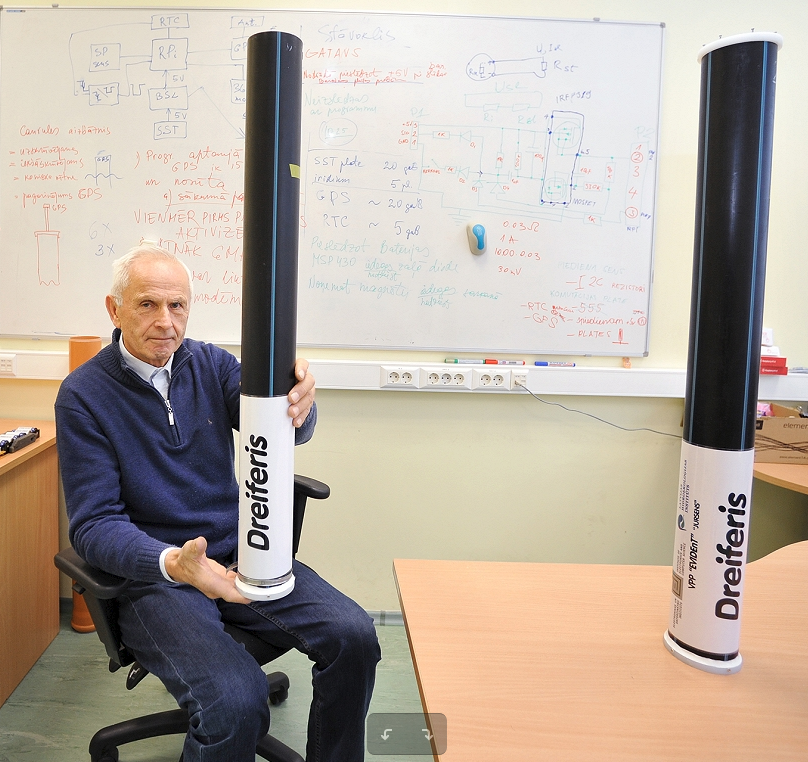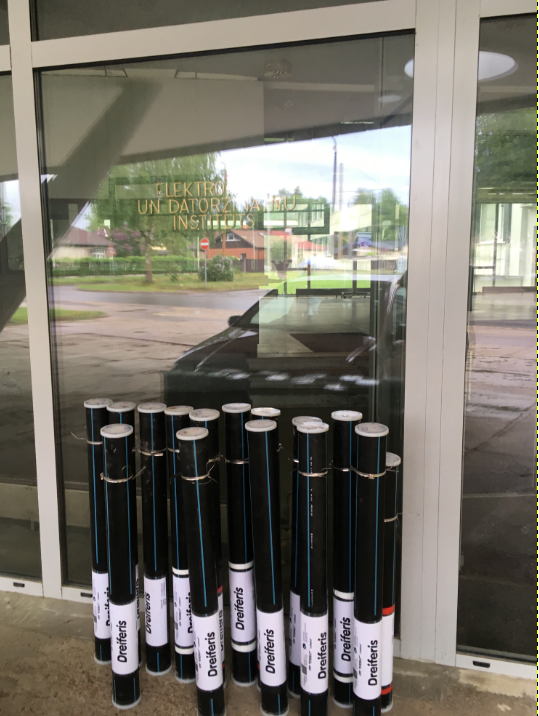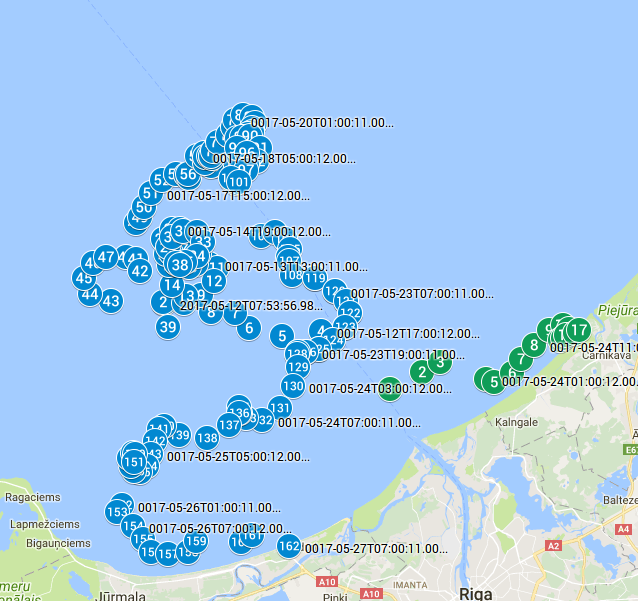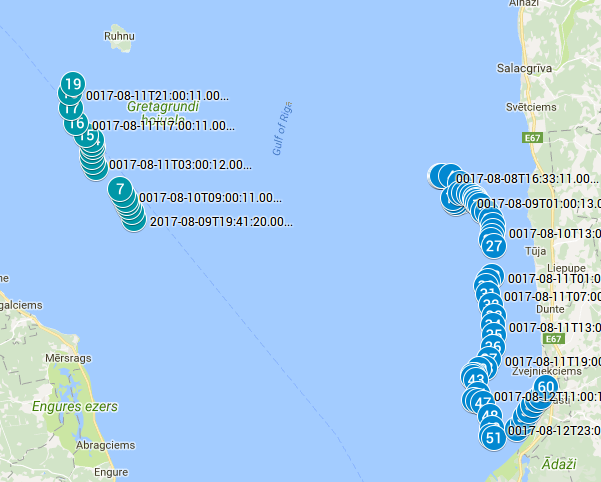Project Tasks 2 (subproject JURSENS) will adapt/elaborate models for wind fields, wave and current dynamic, developed wave and current measurement sensor prototypes and performed field measurements.
Involved research groups:
Institute of Electronics and Computer Science
Latvian Institute of Aquatic Ecology
Latvijas Universitātes Fizikas un matemātikas fakultāte
Latvijas Universitātes Bioloģijas fakultāte
Latvijas Universitātes Ģeogrāfijas un Zemes zinātņu fakultāte
Latvijas Universitātes Bioloģijas institūts
Rīgas Tehniskā universitāte
Datorzinātnes un informācijas tehnoloģijas fakultāte
Latvijas Lauksaimniecības universitāte
Daugavpils Universitāte
Fizikālās enerģētikas institūts
Latvijas Valsts mežzinātnes institūts “SILAVA”
Nacionālais Botāniskais dārzs
Pārtikas drošības, dzīvnieku veselības un vides zinātniskais institūts “BIOR”
1.2. Subproject “Current and Wave Mode” (JURSENS) results are following:
Three experimental models were developed using 3 different data transmission technologies. 20 sea drifting platforms for data collection at sea have been manufactured, tested and prepared for approbation, 10 of which have been approbated in the Gulf of Riga. The results of the project are published in one scientific journal article indexed in the IEEExplore database. One master’s thesis has been developed for the achievements of this project.
Scientific significance of the results: floating sea wave and current sensors have been developed that can be used to obtain information about the seasonal regime of waves and currents, as well as the most significant results have been published.
Practical significance and applications of the results: Empirical information on the seasonal regime of waves and currents in relation to climatic factors was obtained. The obtained results will further provide an opportunity to improve and operationalize the existing wave and current models.
Directions for further work and problems to be solved: to search for innovative solutions for the development of wave and current sensors; to develop even more economical floating wave and current sensor platforms for data collection in the Baltic Sea and freshwaters; to demonstrate the applicability of the developed sensor platform in other industries as well.
The attached maps describe the movement of sea-drift drifters in the impact of sea currents in the Gulf of Riga between April 2017 and November 2017.
EDI designed the sea surface drifters are plastic (PE100) cylinders with a height of 100 cm and a diameter of 9 cm. The weight of the drum with a ballast is 6.2 kg. Drifter’s draft in water is 70-75 cm. In the Gulf of Riga, drifters were deployed with a motorboat or a ship. The obtained results show that it is more purposeful to carry out the positioning of drifters with a vessel, which allows the drifters to be deployed deeper into the bay. The use of motorboats for the placement of drifters is permissible for coastal currents measurements.
The drifters were deployed 15 times, 11 of which were successful, measurements were made, which are reflected in the results of maps:
Ju2_20_aprilis.pdf, Ju2_Ju5_maijs.pdf, Ju_junijs.pdf, Julijs_Ju_5_Ju_3.pdf, Ju2_aug_.pdf, Ju5_Ju1_aug.pdf, Ju9_13_sept_.pdf, Ju2_26_sept_.pdf.
Measurements in drifters were made every 2 hours. Due to different conditions, not all measurements were successful, as indicated by trajectory bursts on maps. A large part of the measurements show a similar tendency that by locating the drifters near the coast, they arrive fairly quickly, in 5-7 days, on the shore. Exceptions are drifters deployed with a ship, see Ju5_Ju1_aug.pdf and Ju9_13_sept_.pdf. The map Ju5_Ju1_aug.pdf shows how the drifter escapes in the direction of the Roņu island, while the drift driven by Ju9_13_sept_.pdf was found flooded on November 19 in Parnu.




